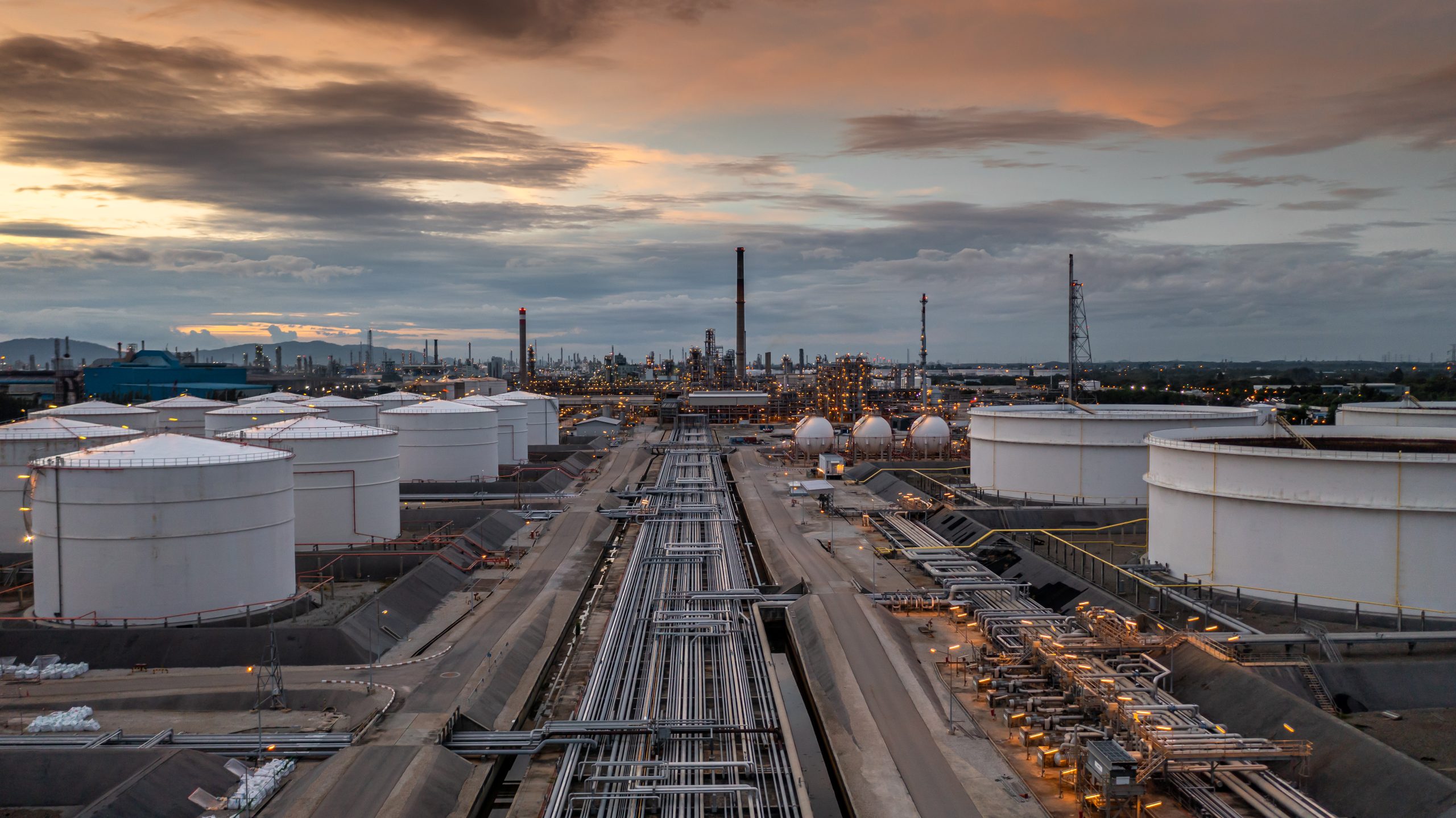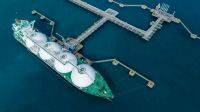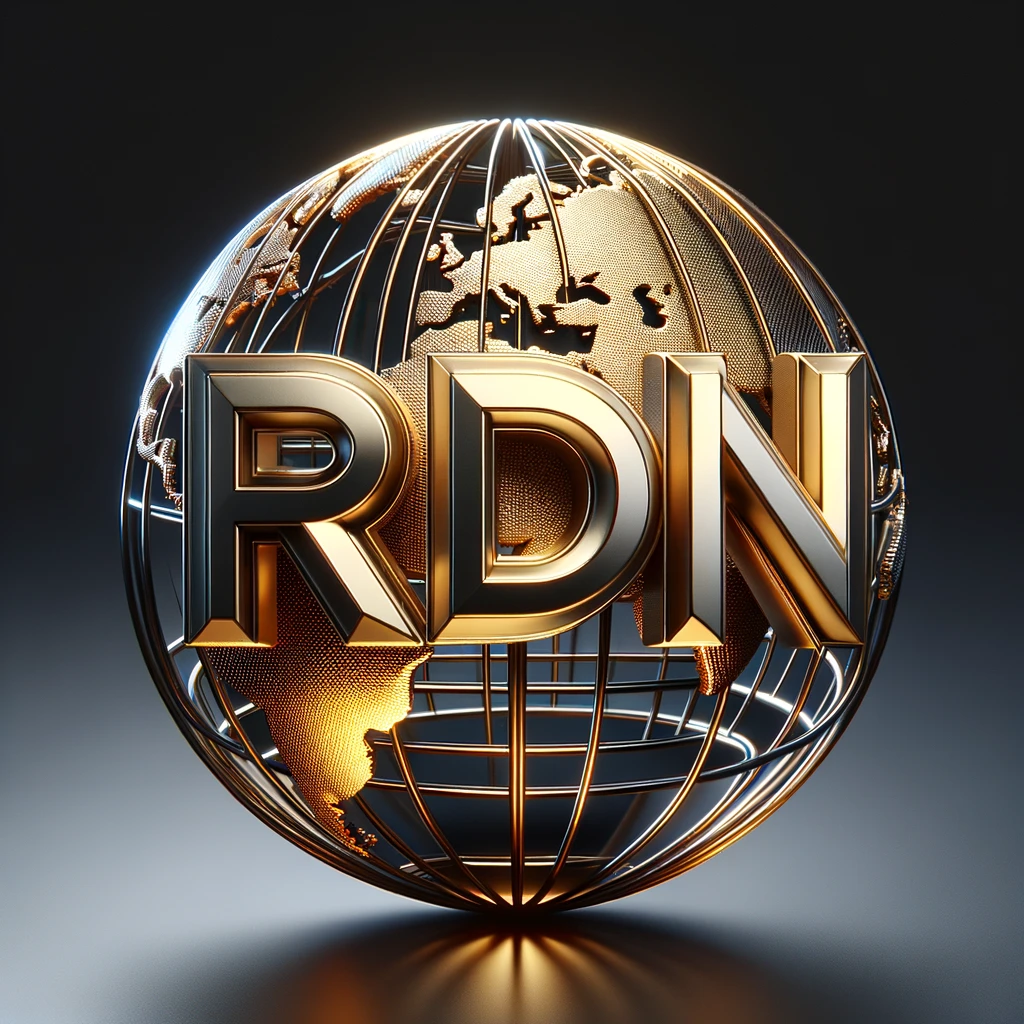Energy Products
Our company specializes in providing a comprehensive range of energy products, including oil, gas, and related items, catering to a variety of industry needs. We pride ourselves on delivering high-quality resources that power businesses, communities, and daily operations across the globe. Our products are sourced responsibly and are known for their reliability and efficiency, helping clients achieve their energy goals while adhering to stringent environmental standards.
In addition to traditional energy products, we continuously expand our portfolio to include innovative solutions that meet the evolving demands of the energy sector. This includes investments in renewable resources and cutting-edge technologies that reduce environmental impact. Our dedicated team of experts ensures that all services are tailored to the specific needs of our clients, providing support and consultancy to optimize their energy consumption and maximize efficiency, securing our position as leaders in the energy market.
Services and Logistics
Transferring crude oil is a critical process in the oil industry, involving the movement of crude oil between ships and storage tanks. This process is conducted through three primary methods: ship to tank, ship to ship, and tank to tank.
- Ship to Tank: This method involves transferring crude oil from the cargo tanks of a vessel directly to onshore storage tanks. This is typically done via pipelines connected to the ship’s docking facilities. Safety measures and careful monitoring are essential to prevent spills and ensure that the oil is transferred efficiently.
- Ship to Ship: Also known as lightering, this process involves transferring crude oil between two vessels positioned alongside each other, often while at sea. This method is used when the larger vessel cannot dock at the port due to size constraints or when transferring cargo to another ship for further transport. It requires precise navigation and coordination to maintain stability and ensure a safe transfer.
- Tank to Tank: This involves moving crude oil between tanks within the same facility or between different facilities. Pumps and pipelines are used to transfer the oil, and this method is crucial for managing the storage and blending of different grades of crude oil to meet specific requirements.
- Tank To Tank
- Ship To Tank
- Ship Ship.

Each of these methods requires stringent safety protocols, including regular maintenance of equipment, training for personnel, and compliance with environmental regulations to manage risks and protect against potential hazards associated with the transfer of crude oil.
Our Best Solutions
Advanced Technology
Expert Engineers
Delivery on Time
Steps That We Take To Ensure a Smoth Transcation For You as a Client!
Standard procedures for trading crude oil between buyers and sellers are designed to ensure transparency, efficiency, and security in transactions. These procedures typically cover various aspects such as contract agreements, quality and quantity determination, transportation, and payment terms. Here is an outline of standard procedures for trading crude oil:
1. Contract Agreement
- Parties Involved: Identify the buyer and seller along with their legal representatives.
- Product Specifications: Clearly define the type, grade, and quality of the crude oil being traded.
- Volume: Specify the total quantity of crude to be delivered in barrels or metric tons.
- Price Determination: Set the pricing mechanisms, whether it’s based on a benchmark (like Brent or WTI) or fixed at the time of contract signing.
- Delivery Terms: Detail the delivery terms using Incoterms (e.g., FOB, CIF, etc.) that outline responsibilities, risks, and costs for transportation.
- Duration: Define the period over which deliveries will take place and any conditions for contract termination.
2. Quality and Quantity Determination
- Inspection: Arrange for an independent inspector to test and verify the quality and quantity of the crude at the loading port prior to shipment.
- Certification: Obtain a certificate of quality and quantity that serves as proof for both parties.
- Dispute Resolution: Include mechanisms for handling discrepancies in quality or quantity, such as re-testing or third-party arbitration.
3. Transportation
- Mode of Transport: Specify whether the crude will be transported via tanker ships, pipelines, or rail.
- Loading and Unloading Procedures: Outline procedures for safe loading and unloading, including safety checks and environmental precautions.
- Documentation: Ensure all necessary transport and customs documents are prepared and approved, including bill of lading, manifest, and export/import licenses.
4. Payment Terms
- Payment Schedule: Define the timeline for payments, which may include advance payments, upon delivery, or after receipt of crude.
- Currency and Payment Method: Agree on the currency (e.g., USD, EUR) and the method of payment (e.g., wire transfer, letter of credit).
- Credit Terms: If applicable, specify any credit arrangements, including guarantees or letters of credit from reputable banks.
5. Legal and Regulatory Compliance
- Compliance: Ensure both parties adhere to international trade laws, sanctions, and anti-bribery regulations.
- Environmental Regulations: Comply with environmental standards related to the transportation and handling of crude oil.
- Contract Enforcement: Agree on the legal jurisdiction and governing law for the contract.
6. Documentation and Record Keeping
- Contract Documentation: Maintain comprehensive records of all contract documentation, communications, and transaction records.
- Audit Trails: Establish clear audit trails for verification and compliance purposes.
These procedures are fundamental to mitigating risks and ensuring that the trading of crude oil proceeds smoothly and according to agreed-upon standards. Each transaction may require specific adjustments or additions to these standard procedures based on the regulatory requirements of the countries involved, market conditions, or specific needs of the trading parties.Please
keep in mind that Markets are rapidly changing each day, and all terms and prices can change as well. We will do our best to inform our clients of the changes as we receive them.
Fuel Prodcuts
Light Crude
Light crude oil is characterized by its low density and low viscosity. It is generally considered more desirable than heavy crude oil because it produces a higher yield of high-value products such as gasoline, diesel fuel, heating oil, and jet fuel after refining. Here are the key specifications and properties of light crude oil:
1. API Gravity
- Light crude oil typically has an API gravity of more than 31.1 degrees. The API gravity is a measure of how heavy or light a petroleum liquid is compared to water. If its API gravity is greater than 10, it is lighter and floats on water; if less than 10, it is heavier and sinks.
2. Sulfur Content
- Light crude oils generally contain low levels of sulfur, classified as “sweet.” This means they have a sulfur content of less than 0.5%. The low sulfur content is advantageous because it requires less processing to meet sulfur standards imposed on fuels in consuming countries.
3. Color and Consistency
- The oil tends to be amber to light brown in color. It has a relatively thin consistency, which makes it easier to pump and transport.
4. Boiling Points
- Light crude oil has lower boiling points, which means it produces more volatile products at lower temperatures during the refining process. This property allows refineries to use less energy when distilling the oil into its component products.
5. Production Regions
- Major producers of light crude include regions like the United States (particularly from shale formations), the North Sea, West Africa, and parts of the Middle East.
6. Refining Value
- Due to its characteristics, light crude is more expensive than heavier grades. It can be processed in simpler refineries with less complex technologies. Its yield of valuable light fractions like gasoline and diesel is higher compared to heavier oils.
7. Storage and Transportation
- Light crude is easier to store and transport because it does not require heating to flow in pipelines or during marine transport. However, its high volatility requires careful handling to prevent loss and ensure safety.
8. Environmental Impact
- While still a fossil fuel, light crude’s lower sulfur content and higher efficiency in refining typically result in somewhat lower emissions of pollutants compared to heavier crudes.
These specifications make light crude oil a premium product in the global oil markets, influencing pricing, trading dynamics, and refinery operations.
En590 10PPM Euro
EN590 10ppm is a specific type of diesel fuel defined by European standards, particularly meeting the specifications outlined in the EN590 standard. This standard covers the properties of diesel fuel to be used in diesel engine vehicles in the European Union and other markets that adopt this standard. The “10ppm” refers to the maximum allowable sulfur content in the fuel, which is 10 parts per million (ppm). This ultra-low sulfur level is significant for several reasons, particularly concerning environmental impact and engine performance.
Key Specifications of EN590 10ppm
1. Sulfur Content
- EN590 10ppm diesel contains no more than 10ppm of sulfur. Reducing sulfur content in diesel fuel is crucial for decreasing sulfur dioxide (SO2) emissions, a significant contributor to air pollution and acid rain.
2. Cetane Number
- The standard requires a minimum cetane number of 51. The cetane number indicates the fuel’s combustion speed and is an indicator of the quality of ignition. Higher cetane numbers mean quicker ignition of the fuel-air mixture, leading to more efficient combustion and smoother engine operation.
3. Density
- The density of EN590 diesel must be between 820 and 845 kilograms per cubic meter at 15 degrees Celsius. This affects the energy content and combustion characteristics of the fuel.
4. Flash Point
- The flash point is the lowest temperature at which the fuel can vaporize to form an ignitable mixture in air. EN590 mandates a minimum flash point of 55 degrees Celsius, ensuring safety during handling and storage.
5. Cold Filter Plugging Point (CFPP)
- This specification indicates the lowest temperature at which a given volume of diesel fuel will pass through a specified filter within a given time when cooled under certain conditions. The CFPP varies by season and region to accommodate climatic differences.
6. Distillation
- The distillation process involves heating the diesel to a temperature where fractions of the fuel evaporate. It is crucial that 95% of the fuel distills at temperatures below 360 degrees Celsius. This ensures that the fuel will perform well under a range of operating temperatures.
Benefits of EN590 10ppm Diesel
- Reduced Environmental Impact: The ultra-low sulfur content helps in significantly reducing emissions of sulfur oxides, which are harmful pollutants.
- Compatibility with Advanced Emission Control Technologies: Low sulfur content is critical for modern diesel engines equipped with advanced emission control systems, such as diesel particulate filters (DPFs) and selective catalytic reduction (SCR) systems. Sulfur in higher concentrations can foul these systems, reducing their effectiveness and lifespan.
- Improved Engine Performance and Maintenance: Lower sulfur content and better quality control in the production of EN590 diesel can lead to improved engine performance, reduced engine maintenance requirements, and longer engine life.
EN590 10ppm diesel represents a shift towards cleaner, more environmentally friendly diesel fuels designed to meet stringent emissions standards while providing optimal performance in modern diesel engines.
JetA1 Kerosene JP54
1. Freezing Point
- Jet A1 has a maximum freezing point of -47 degrees Celsius. This low freezing point is critical for high-altitude flights where temperatures can drop significantly, ensuring that the fuel remains fluid and does not crystallize in the fuel lines.
2. Flash Point
- The flash point of Jet A1 is typically around 38 degrees Celsius. This is the minimum temperature at which the fuel can vaporize to form an ignitable mixture in air. A higher flash point indicates better safety, particularly during handling and storage.
3. Density
- At 15 degrees Celsius, the density of Jet A1 ranges from about 0.775 to 0.840 kilograms per liter. This measurement is important for calculating fuel loads and aircraft weight.
4. Composition
- Jet A1 is a mixture of hydrocarbons derived from crude oil. It contains a small, controlled amount of static dissipater additive to prevent static electricity buildup during fuel handling.
5. Thermal Stability
- Jet A1 has good thermal stability, which prevents the formation of deposits at high temperatures encountered in modern jet engines.
6. Sulfur Content
- The sulfur content in Jet A1 is limited to a maximum of 0.3% by mass. Lower sulfur content reduces sulfur dioxide emissions, a pollutant that can cause environmental damage and affect human health.
7. Corrosion
- Jet A1 must pass the corrosion test specified in the ASTM standard, ensuring that it does not corrode aircraft components or storage facilities.
8. Water Content
- The water content in Jet A1 is tightly controlled to prevent ice formation at high altitudes. Water content must be low enough to avoid separation into a distinct water phase under any conditions expected in storage or flight.
Additional Considerations
- Additives: Jet A1 often includes certain additives to enhance performance and safety, including:
- Antioxidants to prevent gumming, usually based on alkylated phenols.
- Antistatic agents to dissipate static electricity and prevent sparking.
- Corrosion inhibitors to protect aircraft tanks and systems from corrosion.
- Fuel System Icing Inhibitor (FSII) for military, some civilian aircraft operating in very cold conditions to prevent water in the fuel from freezing.
Jet A1 fuel’s specifications ensure that it performs under the extreme conditions of aviation environments, supporting engine efficiency and safety while meeting international standards.
LNG GAS
Liquefied Natural Gas (LNG) is a form of natural gas that has been cooled down to liquid form for ease and safety of non-pressurized storage or transport. It is primarily composed of methane, with small quantities of other hydrocarbons, and is a clear, colorless, and non-toxic liquid. Here are the key aspects of LNG that make it an important resource in the global energy sector:
Production
LNG is produced by purifying natural gas and cooling it to approximately -162 degrees Celsius (-260 degrees Fahrenheit). This process reduces its volume by about 600 times, making it more efficient to store and transport over long distances where pipelines are not feasible.
Storage and Transport
LNG is stored at very low temperatures in specially designed insulated tanks to keep it in a liquid state. It is transported globally via LNG carriers, which are double-hulled ships specifically designed to handle the low temperature of the liquid. Once it reaches its destination, LNG is regasified for distribution through gas networks.
Uses
LNG is primarily used for heating and generating electricity. It is also increasingly used as a fuel for vehicles and ships due to its cleaner burning properties compared to coal and oil.
Environmental Impact
LNG is considered a cleaner alternative to other fossil fuels:
- Emissions: Burning LNG produces significantly lower amounts of sulfur dioxide, particulate matter, and other emissions compared to coal and oil.
- Efficiency: It offers a higher energy content per unit of weight, making it more efficient for transport and use.
- Leakage and Spills: In case of a spill, LNG evaporates quickly and does not cause contamination of soil or water, unlike oil spills.
Safety and Handling
Handling LNG requires precautions due to its extremely cold temperature and flammability:
- Cryogenic Burns: Direct contact with LNG can cause severe cold burns or frostbite.
- Flammability: When vaporized, it can form flammable mixtures with air. However, LNG vapors are only flammable within a limited range of concentrations (approximately 5%-15% by volume in air).
Economic Aspects
The global LNG market has grown significantly as countries seek to diversify their energy sources and reduce their dependence on oil and coal. LNG allows nations with abundant natural gas resources to export to global markets, contributing to energy security and economic benefits.
LNG plays a crucial role in the transition toward cleaner energy sources and helps meet the increasing global energy demand while addressing environmental concerns associated with other fossil fuels. Its ability to bridge long distances between gas-producing countries and consumers is a key factor in its growing use in global energy supply chains.
LPG
Liquefied Petroleum Gas (LPG) is a versatile and portable fuel source derived from fossil fuels, primarily consisting of propane, butane, or a mixture of these gases. It’s stored and transported in liquid form under pressure but reverts to a gaseous state when released. Here are the key characteristics, uses, and considerations of LPG:
Production
LPG is produced during the refining of crude oil or extracted from natural gas streams. It is a byproduct of petroleum refining and natural gas processing, making it readily available wherever these activities occur.
Properties
- State: LPG is stored as a liquid under moderate pressure or kept refrigerated, but it vaporizes into a gas when pressure is released.
- Energy Content: It has a high energy content, making it an efficient fuel source.
- Non-Toxic: Although non-toxic, it can cause asphyxiation in large concentrations in enclosed spaces because it is heavier than air and may displace oxygen.
Storage and Transport
- Containers: LPG is stored in steel vessels ranging from small canisters to large tanks and transported via pipelines, road tankers, or ships.
- Handling Safety: It requires careful handling due to its flammability and the pressure under which it is stored.
Uses
LPG is used across various applications due to its clean-burning properties and portability:
- Domestic: It is widely used for cooking, heating, and hot water systems in residential homes, especially in areas without access to natural gas networks.
- Commercial: In commercial settings, it’s used for space heating, cooking, and powering industrial ovens.
- Agriculture: LPG powers agricultural equipment and provides heating for greenhouses.
- Automotive: As an automotive fuel (autogas), LPG is a cleaner alternative to gasoline and diesel, reducing vehicle emissions.
- Industrial: It is used in manufacturing processes, including as a feedstock for making plastics and other chemicals.
Environmental Impact
LPG is considered a cleaner alternative to other fossil fuels:
- Emissions: It emits less carbon dioxide per unit of energy and fewer pollutants like sulfur oxides and particulates compared to coal or oil.
- Efficiency: It burns more completely than many other fuels, reducing waste and emissions.
Safety Concerns
- Flammability: LPG is highly flammable, requiring strict safety measures in storage and use.
- Leak Detection: Because it is odorless, an odorant (ethyl mercaptan) is added to help detect leaks.
- Pressure Safety: The pressurized containers must be regularly inspected and maintained to prevent leaks and explosions.
LPG’s role in the global energy mix is significant due to its versatility, portability, and relatively cleaner combustion compared to traditional solid and liquid fuels. Its ease of storage and transportation makes it especially valuable in rural and remote areas, providing a reliable energy source where other fuels are not feasible.
Bunker Oil
Bunker oil” commonly refers to the fuel oil used to power ships, also known as bunker fuel. This term originates from the storage containers on ships where the fuel is stored, traditionally called bunkers. Bunker fuel is critical for the maritime industry, powering a vast array of vessels from small freighters to large international cargo ships. Here’s a detailed look at the characteristics and types of bunker oil:
Characteristics
- High Density and Viscosity: Bunker fuel is generally thicker and heavier compared to other types of fuel oils used on land. This makes it cheaper but requires heating to reduce its viscosity for pumping and burning.
- High Sulfur Content: Traditional bunker fuels have high sulfur content, leading to significant sulfur oxide emissions. However, new regulations have been pushing for lower sulfur content in these fuels.
Types of Bunker Fuel
Bunker fuels are categorized based on their viscosity and sulfur content, primarily into the following types:
- Heavy Fuel Oil (HFO): This is the most commonly used type, particularly the varieties known as Bunker C or No. 6 oil. It is thick and requires heating for use.
- Marine Diesel Oil (MDO): Less viscous and cleaner than HFO, MDO is similar to diesel fuel used in road vehicles but formulated for marine engines.
- Marine Gas Oil (MGO): This is even lighter and cleaner than MDO, closely resembling regular diesel fuel but made specifically for ship engines.
- Low Sulfur Fuels: In response to the International Maritime Organization (IMO) 2020 regulation, which limits the sulfur content in marine fuels to 0.5% globally (down from 3.5%), there has been a shift towards low sulfur variants of MDO and MGO.
Usage
- Powering Engines: Bunker fuel is primarily used to power the engines of seagoing vessels.
- Heating: On some ships, bunker fuel is also used for heating tanks and other onboard facilities.
Environmental Impact and Regulations
- Emissions: Burning bunker fuel produces sulfur oxides (SOx), nitrogen oxides (NOx), carbon dioxide (CO2), and particulate matter, contributing to air pollution and posing health risks.
- Regulations: The IMO’s MARPOL Annex VI sets limits on SOx and NOx emissions from ship exhausts and prohibits the deliberate emission of ozone-depleting substances. The 2020 sulfur cap aims to significantly reduce the amount of sulfur oxides emanating from ships.
Challenges and Alternatives
- Cost and Availability: Compliance with new regulations can be costly, and the availability of low-sulfur options is not uniform globally.
- Alternative Fuels: The shipping industry is exploring alternatives such as LNG, biofuels, and even battery technology for smaller vessels to reduce dependence on traditional bunker fuels.
Bunker oil remains a fundamental component of the global shipping industry due to its energy-dense nature and cost-effectiveness, but the industry faces increasing pressure to adopt cleaner, more sustainable practices.




